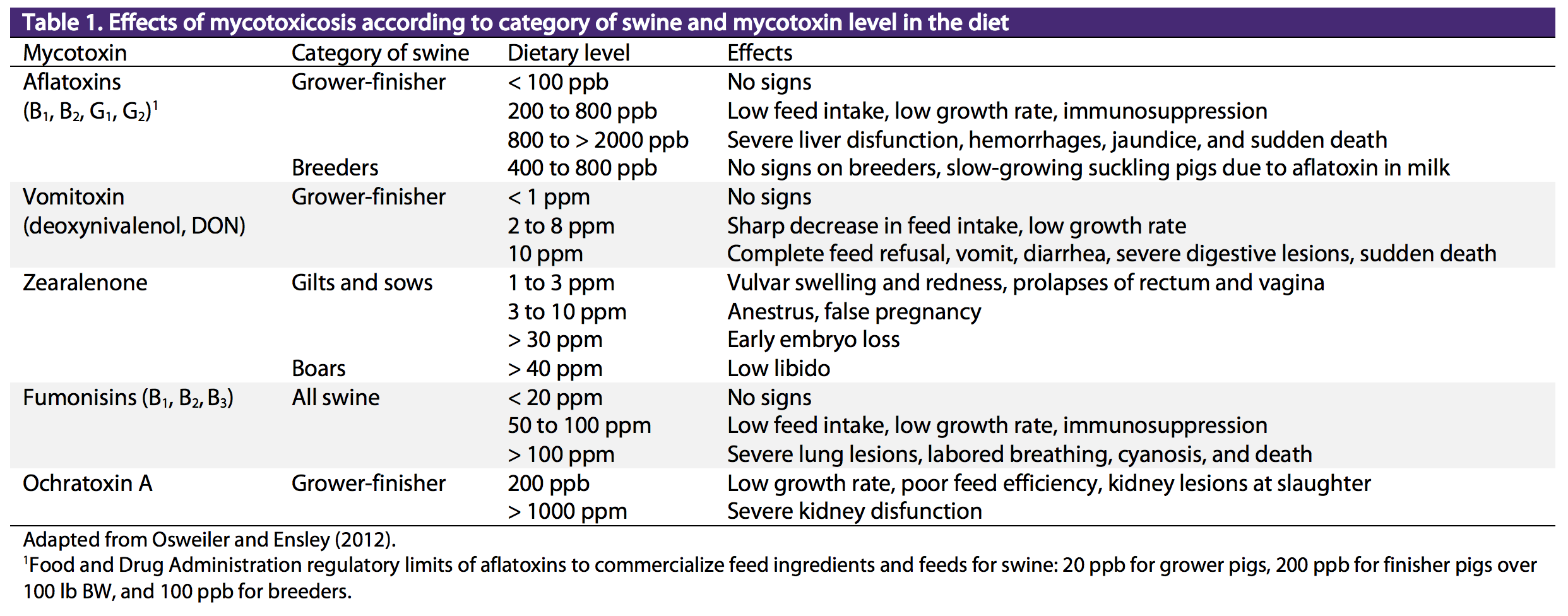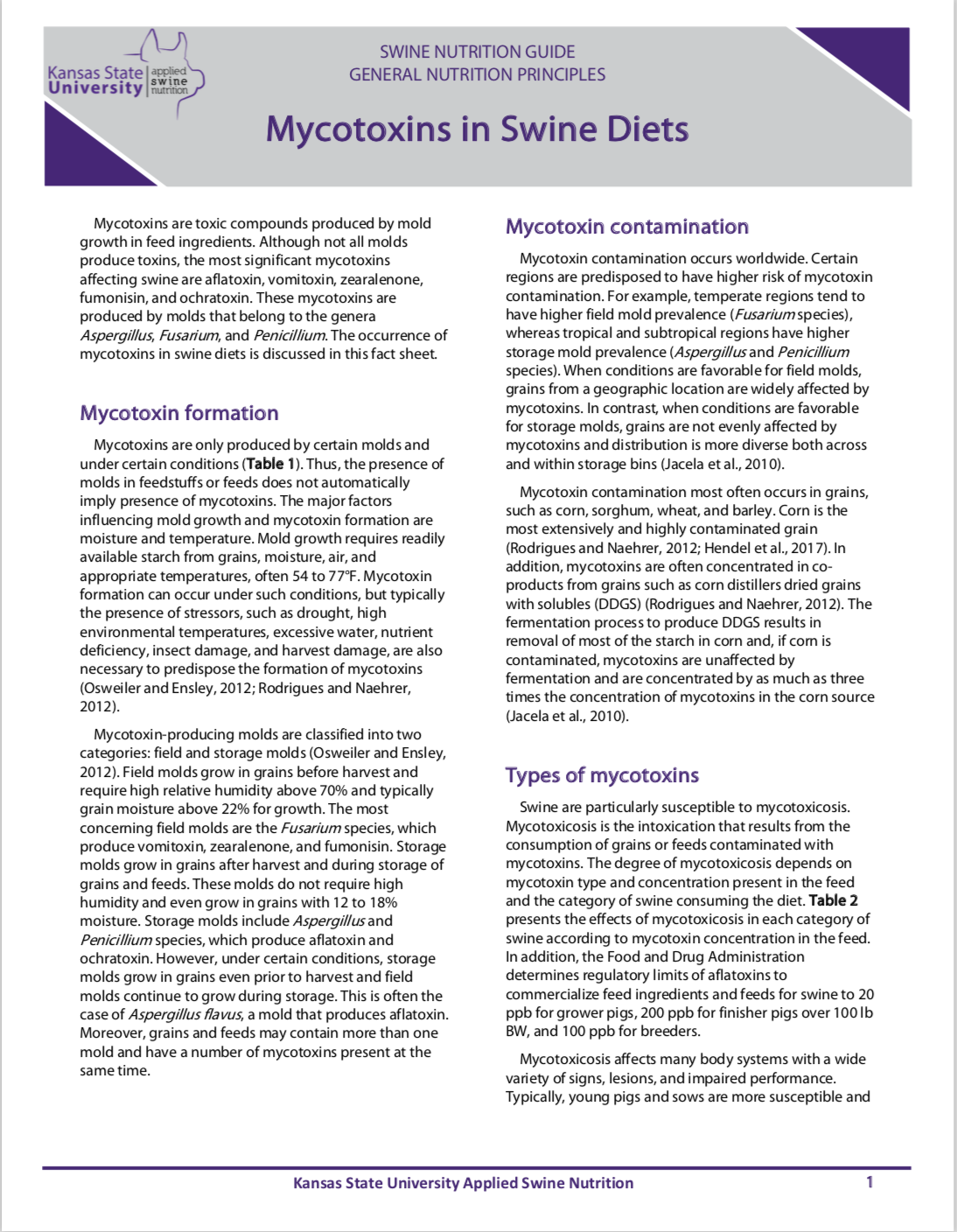Management of mycotoxins in swine diets
In the occasion of mycotoxin contamination of grains or feeds, some strategies for mitigation of mycotoxins in swine diets are available (Dänicke, 2002). Importantly, strategic feeding should be adopted in any instance of mycotoxin contamination by preferentially feeding finishing pigs instead of nursery pigs and sows, which are typically more susceptible to mycotoxins.
At low mycotoxin concentration, grains are often used as is in swine diets as long as mycotoxin concentration in the diet is below the levels affecting health and performance ( Table 1 ). At high mycotoxin concentration, different strategies can be adopted. Grains can be fed to species less sensitive to mycotoxins, such as cattle, or grains can be blended with clean grains to reduce mycotoxin concentration by dilution (Carlson and Ensley, 2003a). However, both strategies require using clean grains, which may be a challenge when mycotoxin occurrence is widespread. Furthermore, the Food and Drug Administration does not permit aflatoxin-contaminated grains to be blended for commercialization. Alternatively, grains can be screened and cleaned to remove broken kernels and reduce mycotoxin contamination in grains (Yoder et al., 2017). Misshapen and broken kernel are associated with higher mycotoxin concentrations.
The inclusion of mold inhibitors and mycotoxin binders in the feed can be used as a detoxification strategy. Mold inhibitors are used to control mold contamination and prevent mold growth, whereas mycotoxin binders or adsorbents are substances that bind to mycotoxins and prevent absorption through the gut. Mycotoxin binders are not effective against all mycotoxins and must be rather targeted to a specific mycotoxin.

